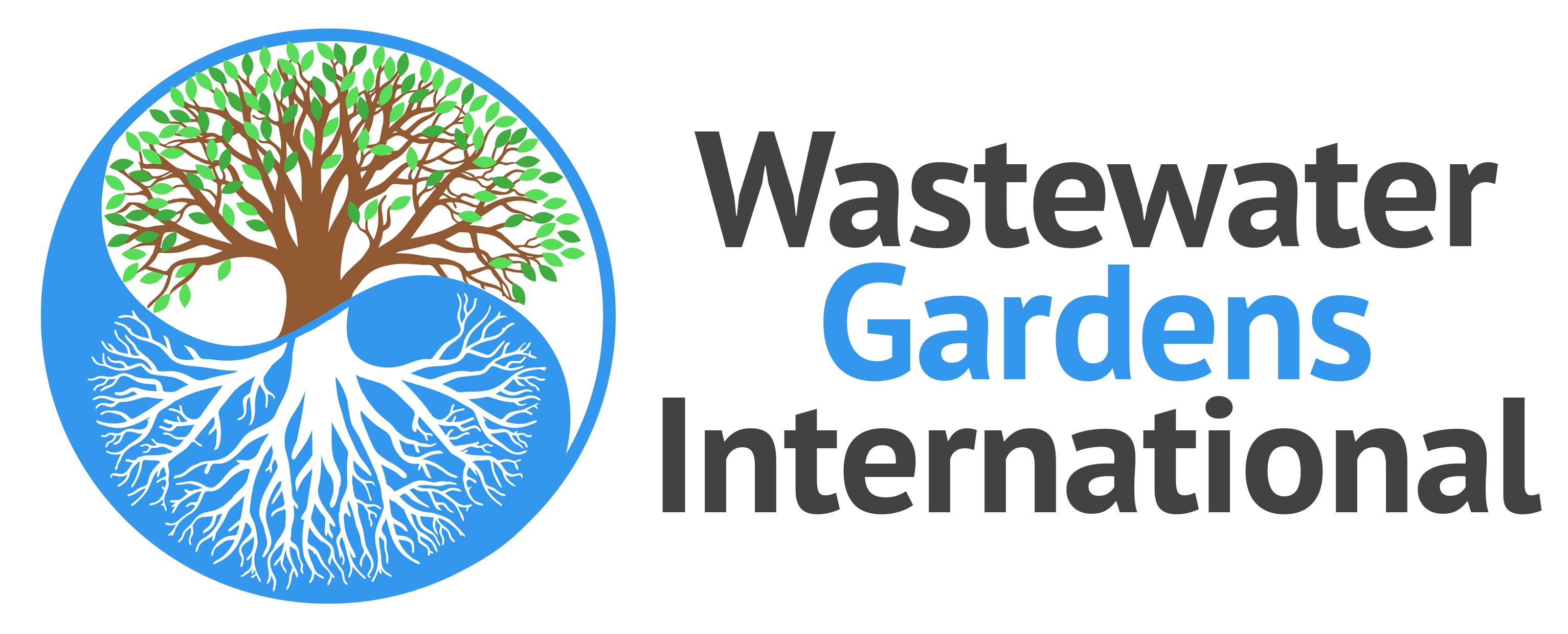Wastewater Gardens came to Indonesia in 1999, when Mark Nelson began work Emerald Starr, a designer/builder on the resort island of Bali to fill a gap in available technologies on the island by providing an effective wastewater treatment solution for resorts, hotels, businesses and communities at a price affordable in terms of the local economy and manageable in terms of local engineering and construction expertise. Water-related issues in Indonesia concern both supply and conservation of potable water and proper treatment of wastewater. Since the onset of mass tourism, water use on the island has increased dramatically. The UNDP projects that on current rates of use and existing policies for the expansion of tourist facilities, water supply for Bali would be in deficit within a decade, and demand would reach four times potential supply by 2050.
The vast majority of Bali’s and Indonesia’s wastewater goes completely untreated, fouling rivers, groundwater and adding to environmental damage. The consequences for human health are also enormous. Starr and Nelson provided a living example of how the Balinese tourism industry might re-use and re-cycle the huge volumes of water it requires by implementing several WWG at the Sacred Mountain Resort he helped design and build in Sideman, Bali.
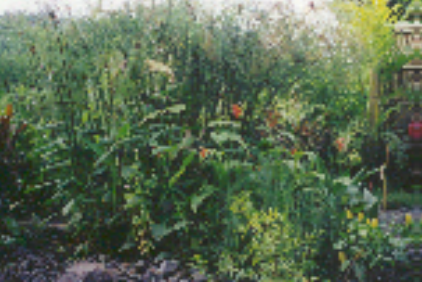
Wastewater Garden for a restaurant at Sacred Mountain Resort, one of eight WWGs there.
After the success of this project, IDEP Foundation, a local environmental education organization working to train Indonesians in environmentally friendly solutions, set up a Wastewater Garden division, working with Nelson and the Planetary Coral Reef Foundation (U.S.), to implement constructed wetlands. The early years of this partnership saw 15 more WWG installed at hotels and resorts across Indonesia including one at the Tirtagangga Water Palace, an icon of Balinese culture funded by the Seacology Foundation and Livingry Foundation.
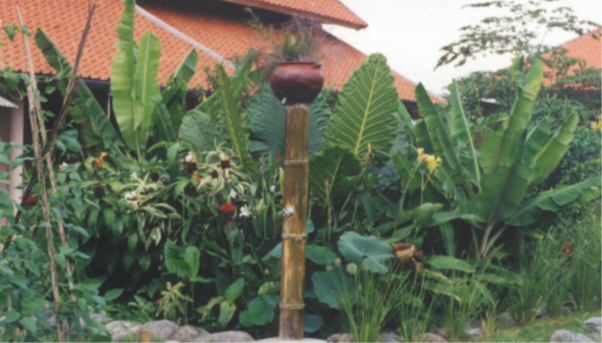
Wastewater Garden at the Sunrise School, Kuta/Leggian, Bali, Indonesia
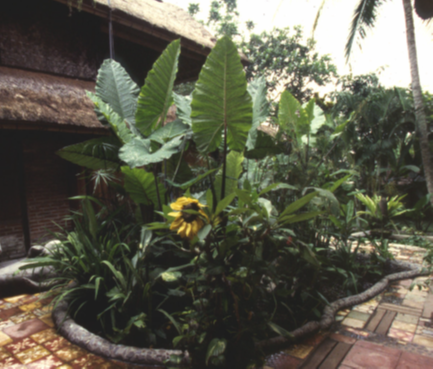
For a private residence in Ubud, Bali, the Wastewater Garden was placed inside the courtyard.
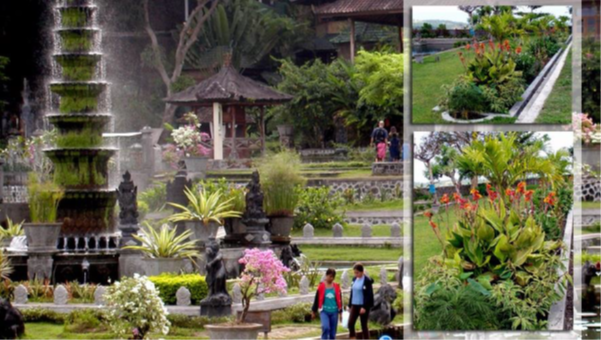
Wastewater Gardens at Tirtigangga, the Royal Water Garden, Bali
Several systems were also implemented at several dive shops and resorts near Bunaken Marine Park, Menado, Sulawesi, a national marine reserve.
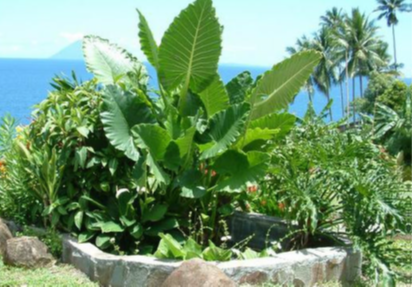
Diving resort, Menado, Sulawesi, Indonesia Wastewater Garden
Also of note was a village bamboo treatment centre using mangroves in the Wastewater Garden as an educational demonstration of the importance of mangrove conservation (working with the Mangrove Action Project) in a fishing/farming village near Menado. These first projects began the process of socializing the technology into the Indonesian and Balinese contexts. During this time Mark Nelson presented the technology to various Balinese institutions including BAPEDALDA, the provincial wing of the Indonesian government’s environmental regulation body, and to Udayana University, Bali’s institute of higher learning.
The reception from these institutions has been extremely promising and BAPEDALDA has since branded the technology with their official support as well as contracting three WWG for government buildings. Negotiations are now under way to determine the feasibility of standardizing and regulating the WWG technology for required implementation on larger scale building projects.
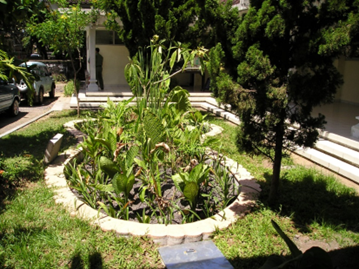
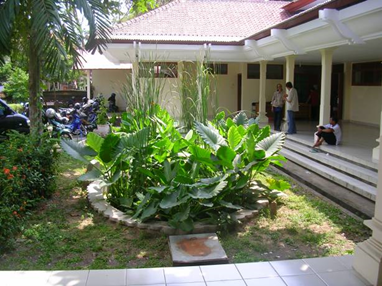
Municipal offices of the environmental agency BAPELDADA (Regional Environmental Impact Management Agency), Denpasar, Bali, Indonesia.
WWG system for 40 people
The IDEP Foundation has continued to design WWG systems for commercial interests while focusing on the development of the technology in the wider Indonesian context (outside the tourism industry). Efforts towards this goal include training of local designers/builders and research into alternative materials and applications for the technology. Notably, the system is being implemented in post-tsunami reconstruction efforts in Aceh, Sumatra, Indonesia.
The Indonesian Context: The tropical archipelago of Indonesia provides an ideal context for the implementation of the WWG technology in terms of climate, available materials, and the overwhelming need for wastewater solutions. Year round sun and high average temperatures provide a “natural greenhouse” to support a vast array of food crop, craft, medicinal and ornamental plant species, thus allowing WWG to be designed for aesthetics and productivity as well as utility. Some of these native plants such as the ijuk palm have also provided materials for replacement of manufactured septic tank filters and for geotextile covering of subsoil irrigation lines.
Materials: One of the primary advantages of the WWG technology in rural situations is its adaptability to locally available materials. While Indonesia is comparatively lacking in manufactured and processed materials for waste management systems, the vast biodiversity of the archipelago has provided several practical solutions. In their simplest form WWG consist of an impermeable layer, plant media, filter materials, and piping. The investigation of alternative, local materials is continuing and offers a way to lower the costs to make such systems more affordable at the local economy level.
Water testing in Indonesia: Use of local water testing facilities on Bali has been a challenge to the research and reporting aspects of IDEP’s work with WWG. Results received to date are promising but leave some question as to the accuracy of the methods used. On the positive side, these tests indicate that nutrient removal is quite good: 75% removal of total N and 57% removal of total P, TSS reduction of 69% to 0 21 mg/l, but COD reduction is 64% and BOD just 40% if the tests are accurate.
Other applications solving water pollution problems: Continuing international research in phyto-remediation suggests that the wastewater garden technology could be applied as an antidote to other sources of wastewater pollution. Yayasan IDEP is currently exploring techniques for using Chinese Brake fern to uptake arsenic from polluted well water in Aceh, Sumatra and purifying irrigation water of residual heavy metals from heavy use of pesticides and chemical fertilizers in wet rice agriculture. Other industries such as jewellery and cloth-dying may also be a good application for constructed wetlands and bio-remediation.
A first Wastewater Garden in North Sulawesi, using mangrove species, was designed, and constructed in 2003. This Wastewater Garden system serves as an educational tool by demonstrating the diversity and usefulness of Indonesian mangroves, amongst the most biodiverse mangrove ecosystems in the world. The system replicates mangrove zonation from coastal to back mangrove ecology. In addition, it will showcase mangroves used locally for traditional medicines, fibre, food, and fuelwood. Our strategy for the Mangrove Action Project sites around the world is to use a wide variety of mangrove species (true mangroves and mangrove associates), ranging from shallow-rooted back mangrove species to deep-rooted trees found throughout all major mangrove zones. The use of a wide range of plants – and subsequently a diversity of root systems – helps to oxygenate the subsurface environment and thereby to support microbial life which enhances the performance of the WWG system. The use of a wide range of species also mitigates impact on system performance should disease or insects affect one species. The ability of WWG to support the life of a wide range of wetland species is illustrated by its capacity to showcase the importance and richness of North Sulawesi.
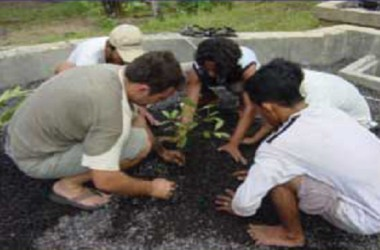

Initial planting of mangrove species, Tiwoho, north Sulawesi, Indonesia.
The Wastewater Garden serves a community centre for bamboo utilization
implemented by the Mangrove Action Project.
